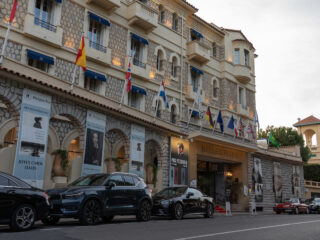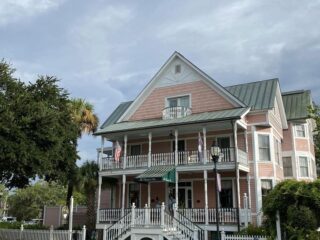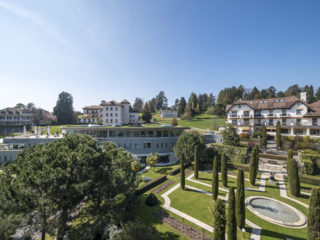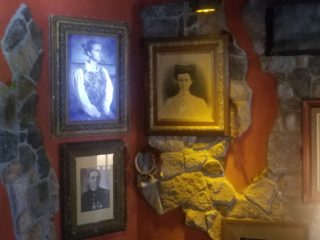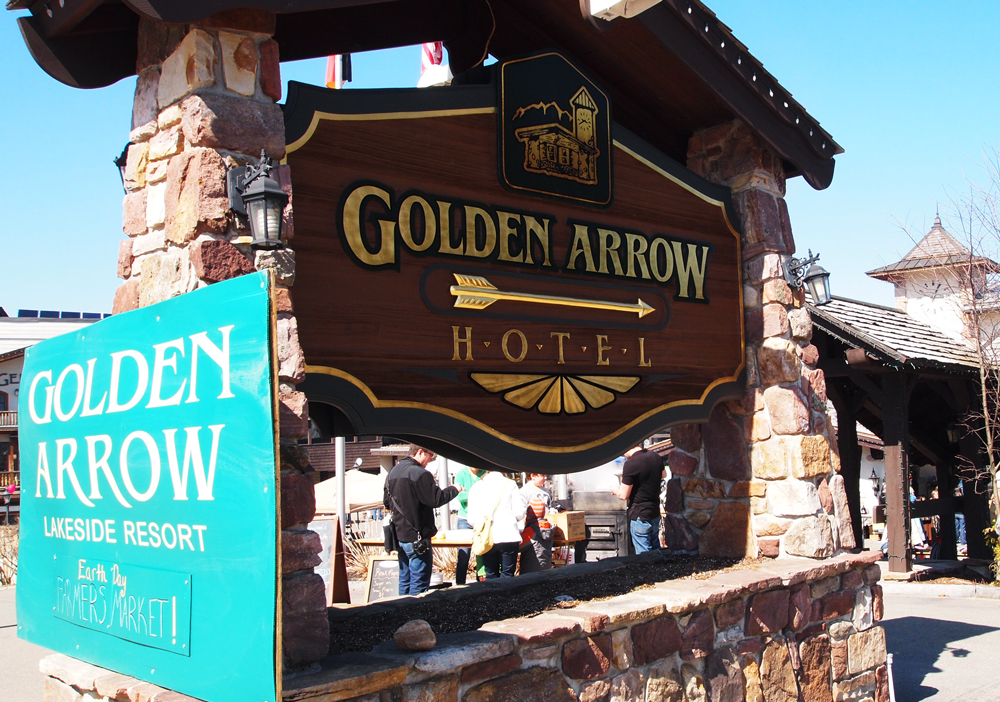By Albert Englehardt
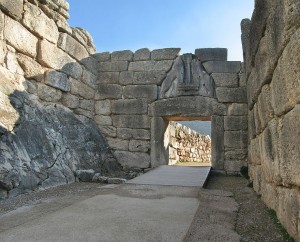
“See, here is the German archaeologist Wilhelm Dörpfeld’s signature, and here is Agatha Christie’s, and over there is Jean-Paul Sartre’s. Your room is named after him. My father made these copies from the guestbooks of our hotel,” Agamemnon Dasis said as he pointed to the index-card-sized photos mounted in the large frame hanging on the wall next to the hotel’s registration desk.
We were standing in the lobby of La Belle Helene de Menelas Hotel in Mykines, Greece, about a mile down the road from the ruins of Mycenae, one of Greece’s premier archaeological sites. Our guidebook had recommended the hotel for its historical significance in having played host to Heinrich Schliemann and other famous archaeologists, as well as its moderate prices and ideal location near the ruins. My wife, Celeste, and I decided to stay at La Belle Helene in spite of its lack of en-suite facilities and its 19th-century-sized rooms.
Stepping down through the door from the modern lobby into the original building was like stepping into a long-gone age, with the black, gray, and white tile flooring and framed photographs and prints, many of them with small hand-written labels identifying them as gifts from distinguished guests. The door to each guest room had small black-and-white metal plates with the names of two famous people. Ours read Jean-Paul Sartre and Dilys Powell, a British journalist, author, and film critic. Odd, I thought then, that they were not archaeologists.
A rumbling in the distance and clouds closing in greeted us at breakfast the next morning. “They forecast clear weather, so I don’t think this will last long,” Agamemnon said. “But the site never closes because of weather. They’ve got lightning protection.”
An hour later, we came down to check on the weather. Now it was raining steadily. Deciding to wait out the rain, we sat at the table where we had had breakfast in the large restaurant adjoining the lobby. Agamemnon sat on a settee nearby and rolled a cigarette, a practice I had seen elsewhere in Greece owing to the high cost of manufactured cigarettes.
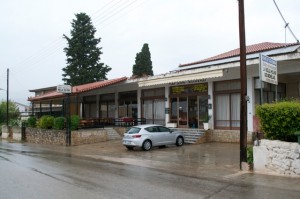
“My great-great-grandfather owned this house when Schliemann came,” he said. “It was the largest building around, so Schliemann rented a room from him. Then his colleagues came and rented rooms and so, in the 1890s, the house was registered as a hotel.” Photographs of the time show a stately two-story house standing alone with a few outbuildings. “In the 1960s, we put on this addition for the restaurant and lobby.” He gestured to the large L-shaped extension covering the front and left sides of the original building. The modern glass facade, along with the covered terrace reaching almost to the street, now blends with the hotel’s less pedigreed neighbors.
“Come over here and look at the signatures from our guest book.”
As I studied the faded copies of the inscriptions in the frames, I noticed the signatures not only of celebrities from the archaeological world, but of the literary and artistic world as well. Woolf? Debussy?
“Sure, lots of famous people stayed here. My father wrote a book about the history of the hotel and the people who stayed here. Unfortunately, it is in Greek.”
I navigated my way through the book with my limited Greek and discovered a Who’s Who of the cultural world — musicians, actors, painters, royalty — one you might expect at the Waldorf Astoria or other major hotel in a cultural mecca.
What particularly drew my eye were the famed writers who had stayed in this tiny eight-room hotel: Andre Malraux in 1951, Stephen Spender also in 1951, Jack Kerouac in the 1950s, William Faulkner in 1957, Allen Ginzburg in 1961, Irving Stone in 1972. And then of course there were writers who are known for their musings about Greece and the East. Rebecca West visited in 1936. Lawrence Durrell came several times, most notably in 1939 with his friend Henry Miller. Patrick Leigh Fermor came in 1950 and 1960. Freya Stark stayed in 1956.
The flow of celebrities has ebbed with the proliferation of hotels in the area and ease of transport. Still, though, a familiar name can be seen in more recent pages: J. K. Rowling stayed at La Belle Helene in 2001.
Not wanting to wait any longer, we packed our car and headed down the road to Mycenae, happy that even if the rain had put a damper on our visit to the ancient city, it had allowed us time to learn about a piece of history often overshadowed by the famous ruins.
But we didn’t leave before making one last obligatory gesture.
“Here, sign it,” Agamemnon said, opening the latest volume of the guest register, “and just think, maybe someday . . . .” We chuckled, gratified by our newly established connection with the long line of celebrities and authors who had preceded us at both Mycenae and La Belle Helene.




